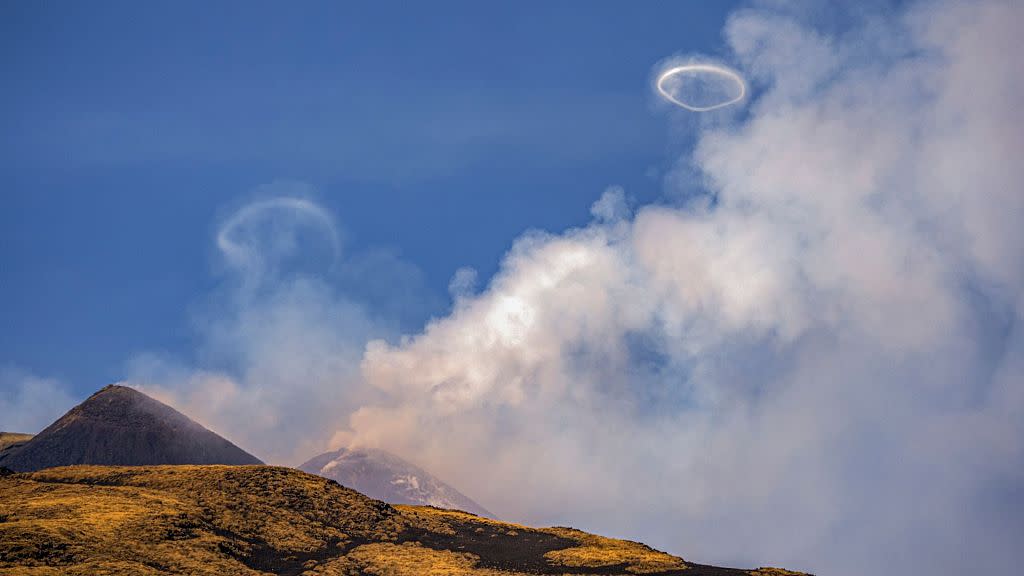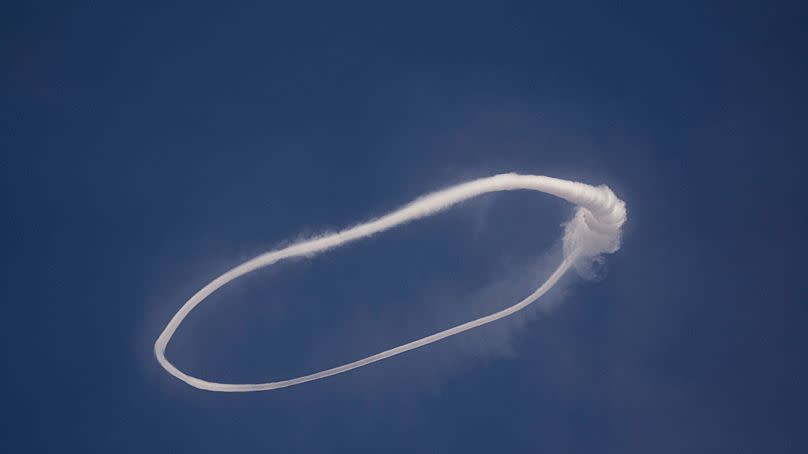What are volcanic vortex rings? Mount Etna blows spectacular ‘smoke rings’ into the sky

Mount Etna in Sicily has been blowing spectacular ‘smoke rings’ into the sky since Wednesday.
The volcano, which towers over the historic port city of Catania, is the largest in Europe and one of the most active in the world. It is a designated UNESCO World Heritage Site.
The ‘volcanic vortex rings’, a rare phenomenon that is generated by the combination of rapid gas release and the vent shape, spewed out of a new crater that opened on Tuesday on Etna's summit.
Boris Behncke, volcanologist at the National Institute of Geophysics and Volcanology in Catania Boris, explained in a Facebook post that “no volcano on Earth produces as many vapour rings (‘volcanic vortex rings’) as Etna”.

‘Etna is breaking all previous records’
“Etna is breaking all previous records. In the late afternoon of 2 April 2024, a small mouth opened on the north-eastern rim of the South-East Crater, producing puffs of glowing gas,” added Behncke.
“By the next morning it was evident that these puffs were producing an impressive amount of steam rings, and this activity has been going on ever since, having already emitted hundreds if not thousands of these pretty rings.”
#Etna is putting on a new, different show. Since the evening of 2 April 2024, a small vent on the Southeast Crater is emetting unprecedented quantities of gas rings (volcanic vortex rings). Timelapse (10x) video recorded at dawn on 4 April 2024 from home in Tremestieri Etneo pic.twitter.com/4VjxNJYxKP
— Boris Behncke (@etnaboris) April 4, 2024
While the physical conditions under which volcanic vortex rings form are still not entirely known, scientists believe they are the result of a combination of fast gas release at the top of the magma conduit and regularity in the shape of the emitting vent. They are thought to form when condensed water vapour from the volcano hits cold air.
There were no reports of particular disruptions in the surrounding villages or at Catania airport, which often closes in the case of major eruptions.

‘Historic’ European Court of Human Rights ruling backs Swiss women in climate change case
Volcano erupts on Galápagos island where last known 'fantastic giant tortoise' was found
When did Mount Etna last erupt?
A Mount Etna eruption last November forced Catania airport to close temporarily, while driving restrictions were put in place due to ash covering the surrounding area.
Prior to that, eruptions in August and May also disrupted flights. The volcano is one of the most active in Europe and has been in an almost constant state of activity for the last decade.
In 2021, Etna emitted so much volcanic material over a sixth-month period that it grew in height by almost 30 metres.
Most eruptions do not endanger those visiting or living in the area, but in 1928 the entire town of Mascali was wiped out by one. More recently, in 2002, streams of lava destroyed shops, hotels and restaurants in the area of Piano Provenzana.
The volcano is under constant surveillance by the National Institute of Geophysics and Volcanology of Catania, which records and communicates tremors in real-time.
